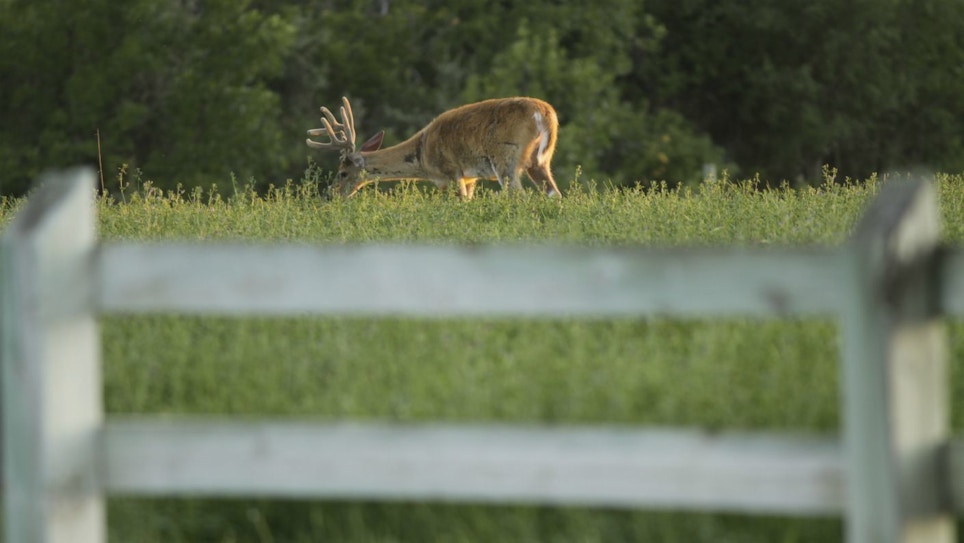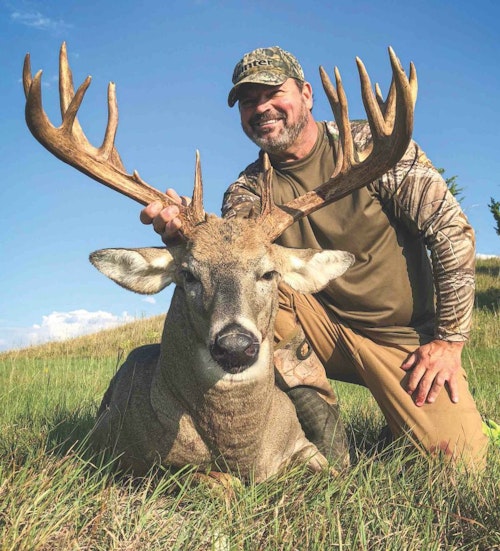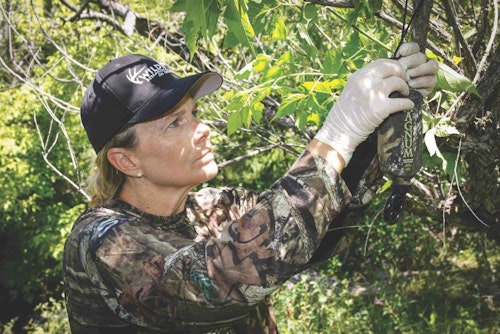The whitetail archery opener varies depending on the state you call home, but in nearly every case expect a green landscape. The majority of seasons are open in late August through early October, with the most kicking off in September.
Together with a green landscape you can assume you’ll require lighter clothing, sunscreen and insect repellent. Bucks may or may not be in velvet, but who cares? They all will have completed antler growth.
Most of all, you’ll need a faultless plan to waylay whitetails institutionalized on an early season lifestyle guaranteed to maintain a Butterball figure. You will never hunt a healthier whitetail; they don a layer of fat any walrus would admire as they stage for the rut and winter ahead.
This all-you-can-eat, easily observable existence, boosted by the absence of hunting pressure, creates a unique opportunity to hunt whitetails like no other time period. This and other reasons make the opener more than an occasion to spend time with your hunting clique. It opens up real prospects for success.
Just ask my hunting friend Greg Gilman, a wildlife property specialist and realtor based in Manhattan, Kansas. After passing on a young buck the previous season, Gilman’s trail cameras revealed the young buck exploded the following year with extra points and mass to make any social media swiper take pause. The buck established a summer pattern visiting a trio of food plots on his property giving Gilman several weeks to nail down a pattern. Waiting for the opener was more excruciating than the anticipation for a trophy to return from the taxidermist.
Fundamentals
Pick a state, any state. Research from most states that have studied the home territory of whitetails reveals that opening-week whitetails rarely travel far.
The book Whitetail Advantage by noted whitetail authorities Dr. David Samuel and Robert Zaiglin refers to one August study from Maryland’s Eastern Shore shared by the Quality Deer Management Association. Peak movement was noted at dawn and dusk, but the bucks, on average, moved only 330 yards in the morning and 435 yards in the evening. The movement started to increase in October and of course it varied depending on a variety of conditions, including the imminent rut.
Another Maryland study noted in the book, merged tracking data of 15 bucks, all 2.5 years or older and revealed they were pretty much homebodies year-round. On average the entire group had an overall home range of 740 acres and a core range, where they spend at least 50 percent of their time, of just 100 acres.
Data like this is recurrent for many whitetail regions and bodes well for you if opening-day success is your goal. Bucks stick to a homebound pattern.
Home Court Advantage
With biologist research, binocular sightings and your trail cameras confirming a buck’s homeland, you have the location set for a meeting. Teamed with your knowledge of a street address for a particular buck you also have patterns to pursue that are as reliable as your own daily stop at a Java hut for a cup-a-Joe. Whitetails need to bulk up as fall approaches. If not, they’ll die.
Unlike your buddies and the rest of America, bucks easily shed up to 25 percent of their summer weight from rut and the trailing winter. To stay out of the Grim Reaper’s reach, bucks must seek out the best foods in the early season.
Depending on your opening date, deer could still be tackling a high-protein diet or transitioning to high-energy foods. For you that necessitates scrutiny to note and adjust if those food preferences suddenly change. If you have the opportunity to hunt bucks in late August, the odds are slim a pattern will shift overnight. All bets are off as September unfolds and particularly as October nears.
Different regions of the country dictate the changes you may encounter. Northerly locations could experience an early, hard frost changing the palatability of a preferred food. Bread basket bowhunters may have to contend with an early soybean harvest or silage cutting. States such as Wisconsin, Pennsylvania and Minnesota lead in this disruptive activity.
Hardwood hunters have to contend with another issue: mast. Although cyclic in nature, the mast of choice, acorns, begin to fall in September. This Red Bull equivalent for whitetails has incredible energy that they’ll seek out when available, and it could also change a pattern from one sit to the next, literally overnight.
To be prepared for what’s ahead you need to know your property and what’s occurring on the neighboring land. Be cognitive of the rotation of crops that may attract whitetails on a whim. Even a blossoming food plot might be ignored by whitetails seeking out the comfort of a farmer’s cornfield next door. If a nearby homeowner in a subdivision has a budding orchard it could create a detour when the trees begin dropping apples. Your situation may differ depending on the diversion, but expect changes after the opener and as fall seasonality progresses. A bird in hand is worth two in the bush meaning; If you know of a reliable pattern, then it’s best to take advantage of it now. Hunt when wind conditions are perfect because what’s happening now will likely change in the coming days or weeks.
As for my buddy, he followed the bird in hand advice. On opening day of the Kansas season he set his alarm extra early and under the cover of 3 a.m. darkness climbed into a stand. Gilman’s trail cameras showed that activity waned in this period and would pick up right at daybreak on the particular food plot the buck preferred.
At shooting light the non-typical buck arrived with a bevy of brothers as predicted. For a moment the bruiser disappeared, giving Gilman a slight panic attack, but within minutes it reappeared from nearby cover to continue feeding. At sunrise, Gilman drew back his Mathews Triax to end his archery season on opening day. His wait for the opener and success was over before the daylight spread across the landscape.
Sidebar: Make A Scrape Now!
Whitetails begin making scrapes in earnest starting in September with increasing gusto as the rut nears. Scrapes likely serve several purposes including as a business card for bucks advertising their presence, and for does to announce their willingness to breed. Regardless of the mystery of the reasons bucks scrape, even opening-day bowhunters can utilize a scrape’s braking abilities to give you a standing shot on a distracted buck. Best of all, you don’t have to wait for a buck to scrape below your treestand. Craft your own mock scrape when and where you want it.
Before scratching out your own scrape, take note of what trees the bucks prefer to scrape under. Now locate one in a shooting lane. If you can’t locate the exact species, you can rob a branch from a nearby fan favorite of local bucks. Take that branch to your shooting lane and zip tie it to an existing tree. Check that it is the proper height for a deer to lick and deposit gland scent from their forehead, and the preorbital gland at the corner of the eye.
You can use that same limb or a higher one to secure a dripper filled with deer urine. There are no hard and fast rules on what sex of urine to use, but buck scent makes sense beginning in September until late October when estrus scent may be more appropriate. Most drippers, such as the 30-year veteran Wildlife Research Center Magnum Scrape-Dripper (below), disseminate urine during the warm period of the day and shut down as temperatures dip at night.
Scrapes vary in size like the scraping bucks themselves, but for the safe setup, make your scrape the approximate size of the others in the woods. Most are the size of a garbage can lid and expanding that size slightly to attract attention certainly won’t detour interest.
Find a strong branch, 3 to 4 feet in length, and use it to scrape away the leafy buildup.
Your mock scrape is now ready for visitors, but take care to minimize human odor during refills utilizing latex gloves, rubber footwear and a liberal dose of scent-eliminating spray.
Photos by Mark Kayser








